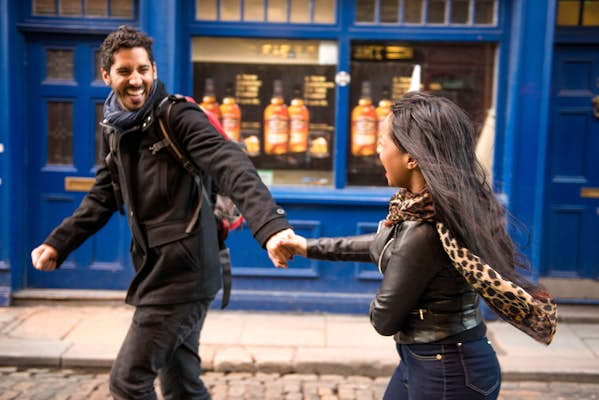
With breathtaking views and stunning landscapes throughout the whole country, Ireland’s scenery is among the most spectacular in Europe. Yes there are many famous places to see, but if you get off the main roads some of the country’s most stunning scenery can be found on secondary roads that wind their narrow way through standout photo ops.
You’ll the Irish are genuinely warm and welcoming, and there are few more enjoyable ways of gaining a greater understanding of the island’s inhabitants than a chat with a local. Here’s our guide to the places that will make a trip to Ireland one to remember, for a long time.
Get more travel inspiration, tips and exclusive offers sent straight to your inbox with our weekly newsletter.  A tourism must-see in southern Ireland: the Cliffs of Moher © Hon Lau / Getty Images
A tourism must-see in southern Ireland: the Cliffs of Moher © Hon Lau / Getty Images
1. Marvel at the Cliffs of Moher, County Clare
One of Ireland’s blockbuster sights, the Cliffs of Moher are staggeringly beautiful, and as a result a visit there is high on every visitors agenda – so be warned it will be busy here. The entirely vertical cliffs rise to a height of 214m, their edge abruptly falling away into a ceaselessly churning Atlantic.
Views stretch to the Aran Islands and the hills of Connemara. Sunsets here see the sky turn a kaleidoscope of amber, amethyst, rose pink and deep garnet red. The turf covered visitors centre, cut into the hillside, has engaging exhibitions covering the fauna, flora, geology and climate of the cliffs.
Local tip: Visiting by boat also brings stunning views. Boat trips to the Cliffs of Moher’s soaring rock faces set off from the pier at Doolin village, 6km to the northeast. On them, the wildlife-spotting can be memorable; on late-afternoon cruises the slanting sunlight produces dramatic effects.
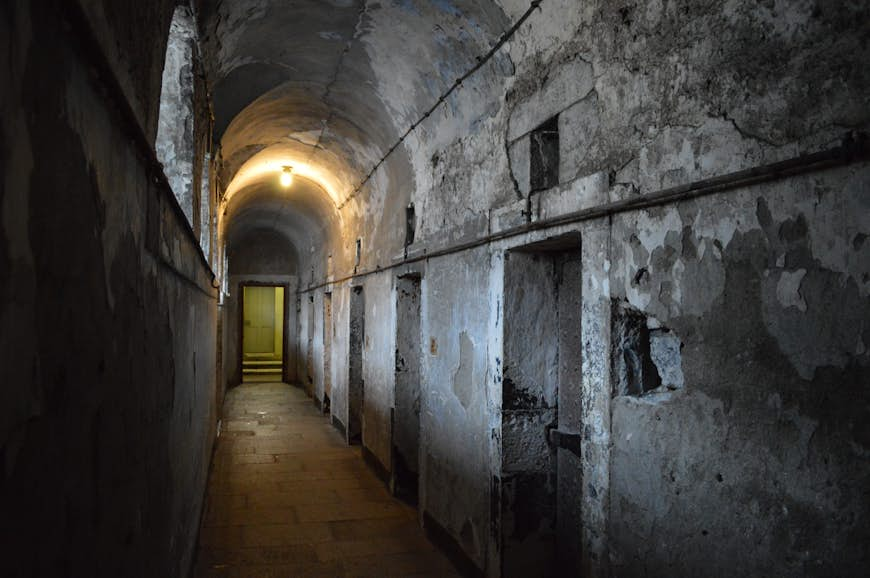 Explore the prison cells at Kilmainham Goal in Dublin © Flavia8 / Shutterstock
Explore the prison cells at Kilmainham Goal in Dublin © Flavia8 / Shutterstock
2. Learn about the independence struggle at Kilmainham Gaol, Dublin City
If you want to understand Irish history, especially the long-running resistance to British rule, then a visit to this former prison is an absolute must. A threatening grey building, Kilmainham Gaol was built in 1796, it’s played a role in virtually every act of Ireland’s painful path to independence, and even today, despite closing in 1924, it still has the power to chill. The tour is gripping, but maybe not suitable for younger children, as it ends in a courtyard where the leaders of the 1916 rebellion were executed.
3. Road trip the Wild Atlantic Way
No visit to Ireland is complete without tackling some part of the 1555-mile long Wild Atlantic Way. Depending on what direction you travel, the craggy, crenellated Donegal coastline is either the dramatic finale of the Wild Atlantic Way or its breathtaking beginning. Ireland’s northwestern corner is an untamed collection of soaring cliffs (the tallest in Europe), lonely, sheep-speckled headlands and, between them, secluded coves and long stretches of white, powdery sand. Among them, in the county’s southwest, is Rossnowlagh, one of Europe’s premier surf beaches and a hotspot for big-wave surfers.
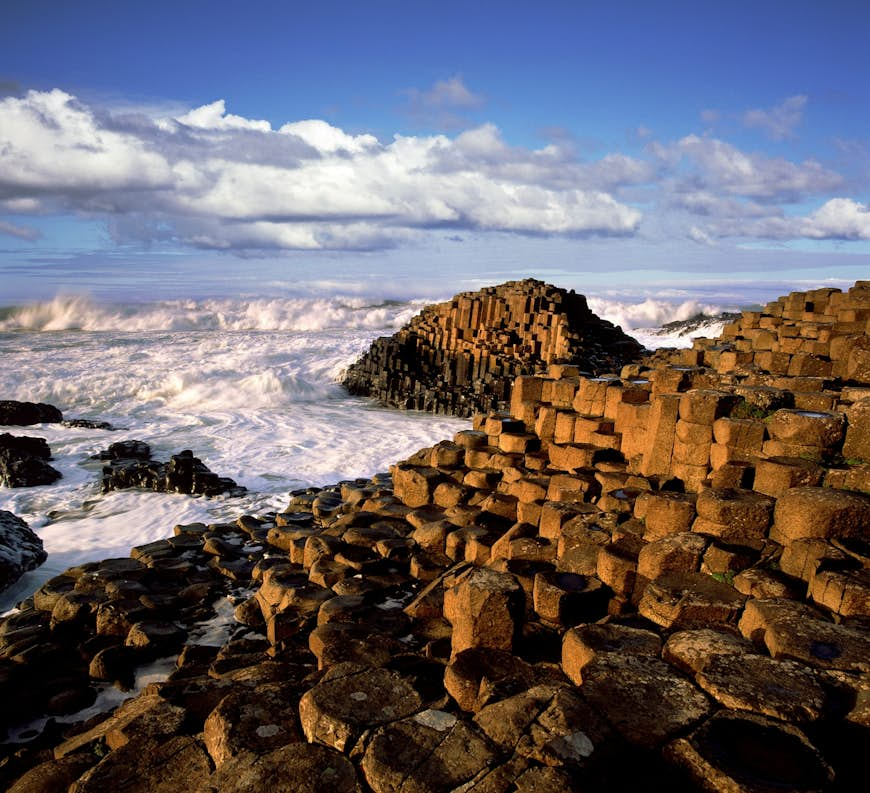 The Giant’s Causeway: Northern Ireland’s only Unesco World Heritage site © Discover_Ireland / Budget Travel
The Giant’s Causeway: Northern Ireland’s only Unesco World Heritage site © Discover_Ireland / Budget Travel
4. Clamber over the Giant’s Causeway, County Antrim
This spectacular rock formation – Northern Ireland’s only Unesco World Heritage site – is one of Ireland’s most impressive and atmospheric landscape features, a vast expanse of regular, closely packed, hexagonal stone columns looking for all the world like the handiwork of giants. The phenomenon is explained in the Giant’s Causeway Visitor Experience, housed in a state-of-the-art ecofriendly building half-hidden in the hillside above the sea. Visiting the Giant’s Causeway itself is free of charge but you pay to use the car park on a combined ticket with the visitor centre; parking-only tickets aren’t available.
Local tip: A pleasant way to reach the Giant’s Causeway (and avoid paying the combined parking and visitor centre entrance fee) is to walk from Bushmills along the path running parallel to the Giant’s Causeway & Bushmills Railway. The walk takes about 45 minutes and there are pretty views across the sand dunes to the coast.
6. Hike Croagh Patrick in County Mayo
Mayo has wild beauty and haunting landscapes, but you’ll find few tourists here, which means there are plenty of untapped opportunities for exploration by car, foot, bicycle and even horseback. Bright and vibrant even in the depths of winter, Westport is a photogenic Georgian town with tree-lined streets, riverside walkways and a great vibe. From here, pilgrims climb Croagh Patrick, the mountain where Ireland’s patron saint fasted for 40 days and nights. Climbing the 764m holy mountain is an act of penance for thousands of believers on the last Sunday of July (Reek Sunday) On a clear day, the tough two-hour climb rewards with stunning views over Clew Bay and its sandy islets.
7. Tour Belfast’s murals, County Antrim
The gable walls of Belfast have become an important tourist attraction, depicting the Troubles of the 1970s and 1980s. As the “voice of the community” the murals were rarely permanent, but changed to reflect the issues of the day. Many nationalist murals in West Belfast commemorate the hunger strike of 1981, when 10 men IRA men starved themselves to death in prison. The Loyalist battle cry of ‘No Surrender!’ is common, along with red, white and blue painted kerbstones. There are various tours that will give a good explanation of the history of Northern Ireland and the murals that depict significant events, or you can take a self guided walking tour.
Detour: If you’re hoping to track down your Ulster ancestors, PRONI has its headquarters in Belfast’s Titanic Quarter. Entry is free, but there are charges for copies of documents. Check the website for details of how to register and search the records.
 Do you dare cross the Carrick-a-Rede rope bridge hanging 30m above rocks and spanning 20m © Bartkowski / Shutterstock
Do you dare cross the Carrick-a-Rede rope bridge hanging 30m above rocks and spanning 20m © Bartkowski / Shutterstock
8. Test yourself on Carrick-a-Rede rope bridge, County Antrim
Now firmly on the tour-bus route, Carrick-a-Rede has become so popular that you need to book in advance of a visit. Mornings tend to be quieter; the coaches arrive in the afternoon.
The 20m-long, 1m-wide bridge of wire rope is not for the faint hearted, swaying 30m above the rock-strewn water. Crossing the bridge is perfectly safe, but frightening if you don’t have a head for heights, especially if it’s breezy (in high winds the bridge is closed). From the island, views take in Rathlin Island and Fair Head to the east.
9. Visit the Aran Islands
The three Aran Islands are situated 40 minutes by boat from Galway, but each has a very distinct flavour. Inishmore (Irish: Inis Mór) is the largest island and home to the only town, Kilronan. Inishmaan (Inis Meáin) preserves its age-old traditions and evokes a sense of timelessness. Inisheer (Inis Oírr), the smallest island, has a strong traditional culture. Dún Aonghasa is one of the largest prehistoric stone forts in Europe and stands guard over Inis Mór on the edge of a 100-metre sheer cliff drop.
Planning tip: Between mid-March and the end of October, interisland ferries mean you can visit all three islands in a day, starting at one and returning from another. Linking the route and connecting with your preferred mainland port just requires some forward planning.
 Local street musicians playing Gaelic music on Galway streets © Jon Chica / Shutterstock
Local street musicians playing Gaelic music on Galway streets © Jon Chica / Shutterstock
10. Soak up the atmosphere of Galway City
Galway is one of Ireland’s most energetic cities, while it’s steeped in history, the city buzzes with a contemporary vibe. Brightly painted pubs heave with live music, while restaurants and cafes offer front-row seats for observing buskers and street theatre. Remnants of the medieval town walls lie between shops and pubs and a long promenade leads to the seaside suburb of Salthill, on Galway Bay, the source of the area’s famous oysters.
 “The Beannachan” 8th century stone oratory built over the burial site of St. Declan © M Timothy O’Keefe / Getty Images
“The Beannachan” 8th century stone oratory built over the burial site of St. Declan © M Timothy O’Keefe / Getty Images
11. Begin the Irish Camino at St Declan’s Way, Ardmore, County Waterford
The seaside village of Ardmore was once one of the most important Christian settlements in Ireland. Today’s visitors come mainly to enjoy the beaches (both the town strand and secluded Ballyquin Beach), as well as water sports and bracing coastal walks. The Irish Camino, St Declan’s Walk, starts from Ardmore through 56 miles (96 kilometres), crossing the Knockmealdown Mountains to Cashel in County Tipperary. Follow the blue signposts along the route and consult this local website for advice.
Detour: The five star Cliff House Hotel in Ardmore is a destination hotel. If budgets allow, the eight course menu in the Michelin-star House restaurant is something to savour.
 The Rock of Cashel, a historical site in County Tipperary © Studio One-One / Getty Images
The Rock of Cashel, a historical site in County Tipperary © Studio One-One / Getty Images
12. Marvel at the Rock of Cashel
Soaring up from the green Tipperary pastures, this ancient fortress takes your breath away at first sight. The seat of kings and churchmen who ruled over the region for more than 1000 years, it rivalled Tara as a centre of power in Ireland for 400 years. Entered through the 15th-century Hall of the Vicars Choral, its impervious walls guard an awesome enclosure with a complete round tower, a 13th-century Gothic cathedral and the most magnificent 12th-century Romanesque chapel in Ireland. Entry is free, but tickets must be reserved online.
 Traditional cottage house in Adare, County Limerick © Patryk Kosmider / Shutterstock
Traditional cottage house in Adare, County Limerick © Patryk Kosmider / Shutterstock
13. Snap postcard-perfect Adare village, County Limerick
Overtouted as “Ireland’s prettiest village”, Adare’s fame centres on its string of thatched cottages built by 19th-century English landlord, the Earl of Dunraven, for workers constructing Adare Manor. Today the pretty cottages house craft shops and fine restaurants, while prestigious golf courses nearby cater to golf enthusiasts. The Irish name for Adare is Áth Dara – the Ford of the Oak. The village is 16km southwest of Limerick, on the approach to the village is Adare Manor, today it is a luxury 5 star hotel and golf resort – visitors are permitted to drive in and take a a look at the incredible grounds and castle.
Planning tip: Adare village is very popular with visitors at weekends over the summer. It’s best to book your accommodation, from self-catering apartments and houses to hotels, well in advance.
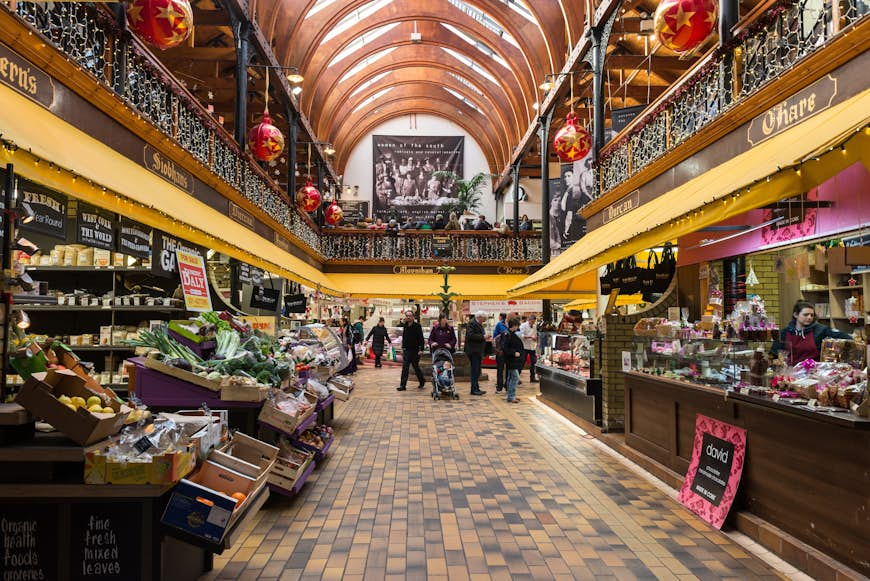 The English Market in Cork City has been open since 1788 © gabriel12 / Shutterstock
The English Market in Cork City has been open since 1788 © gabriel12 / Shutterstock
14. Taste your way around the English Market, Cork City
The English Market is a true gem, with its ornate vaulted ceilings, columns and polished marble fountain. Scores of market traders set up stalls of local fresh produce including meat, fish, fruit, cheeses and takeaway food. Queen Elizabeth II made a memorable trip here on her first visit to Ireland, where she shared a joke with fishmonger Pat O’Connell. On a sunny day, take your lunch to nearby Bishop Lucey Park, a popular alfresco eating spot.
 The round tower at the Glendalough monastic site in Country Wicklow, Ireland © Peter Zelei Images / Getty Images
The round tower at the Glendalough monastic site in Country Wicklow, Ireland © Peter Zelei Images / Getty Images
15. Get reflective at Glendalough
No trip to Ireland would be complete without a visit to Glendalough. Why? It is one of the most beautiful places in the country, and has been recognised for its romantic landscape since the arrival of St Kevin who made a home here in the 5th century.
During the Middle Ages, when Ireland was known as “the island of saints and scholars”, Glendalough became a monastic city catering to thousands of students and teachers. The site is entered through the only surviving monastic gateway in Ireland. Around the monastic site can get congested with visitors, but head away from the crowds and up to the lakes of Glendalough for scenery that will take your breath away.
16. Discover a hidden world at Garnish Island, West Cork
Take the short ferry ride from Glengarrif harbour in County Cork and you step into a garden of Eden. A well kept secret, Garnish is home to exotic plants and unusual species, owing to the microclimate on the island. Stroll around the gardens, including an Italian Garden, a Japanese Garden and the Kitchen Garden, all which have been impeccably maintained for over a century. Visit the Martello Tower on the island, dating from 1805. The ferry ride itself is a wonder, passing a colony of over 250 harbour seals. The island opens from April to October.
 Stone bridge at the Gap of Dunloe in County Kerry © Stefano Valeri / Shutterstock
Stone bridge at the Gap of Dunloe in County Kerry © Stefano Valeri / Shutterstock
17. Squeeze in a stop at Gap of Dunloe, County Kerry
The Gap of Dunloe is a wild and scenic (and sometimes hairy!) mountain pass – studded with crags and bejewelled with lakes and waterfalls – that lies to the west of Killarney National Park, squeezed between Purple Mountain and the high summits of the Macgillycuddy Reeks (Ireland’s highest mountain range).
Take a pony and trap ride with a local for an authentic experience, or walk the Gap to allow time to take in the majestic views.
Detour: Make your way to Heather, for a genuine family-run farm-to-fork restaurant experience – with vegetables from its fields and polytunnels, while seafood and meat are locally and sustainably sourced.
18. Stroll Dublin’s Georgian squares
A perfect way to spend an afternoon in Dublin is to wander around the city’s elegant spaces of Merrion and Fitzwilliam Squares and take in the exquisite architecture. Here you’ll find the perfect mix of imposing public buildings, museums, and private offices and residences.
These include the home of the Irish parliament at Leinster House and, immediately surrounding it, the main branch of the National Museum of Ireland and the Museum of Natural History. Situated on Merrion Square is Ireland’s pre-eminent gallery, packed with art from eight centuries of European tradition. Take a trip over to the Northside to the more vibrant, community centered Mountjoy Square, and stop off at the Hugh Lane gallery on Parnell Square on the way, and view an incredible contemporary art collection.
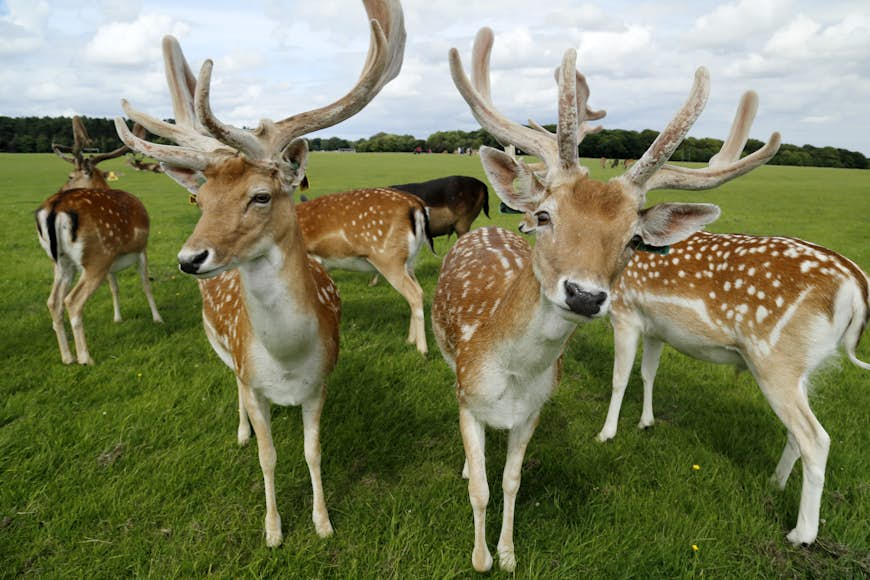 Fallow deer in the Phoenix Park © Cezary Zarebski/Getty Images
Fallow deer in the Phoenix Park © Cezary Zarebski/Getty Images
19. Entertain the family at Phoenix Park
The Phoenix Park has a lot to offer visitors, including Dublin Zoo, Áras an Uachtaráin, home of the Irish president, the official residence of the US ambassador, the Papal Cross (where John Paul II said mass to a million people in 1979) and the often missed Farmleigh House. The Irish government’s official guesthouse is this fine Georgian-Victorian pile designed by James Gandon. Originally part of the Guinness estate, the guided tour only includes the ground floor, but it’s still pretty impressive, especially the fantastic library and glass conservatory. The vast pleasure gardens with lake and walled and Japanese gardens are a delight to stroll. At the weekends you can enjoy a farmer’s market in the grounds of Farmleigh.
20. Visit Yeats grave at Ben Bulben, Sligo
A flat top mountain visible along Sligo’s northern coast, Ben Bulben, resembles a table covered by a pleated cloth. Walking here is not for the uninitiated; High Hopes Mountain Treks leads hikes to the top. It’s best to stock up with snacks for hiking in the Benbulben area as restaurants are few and far between. Pay a visit to nearby grave of poet W.B. Yeats in Drumcliffe Cemetery.
Local tip: Sligo enjoys some of the best night time fun in Ireland’s northwest, with many impromptu trad music sessions.



